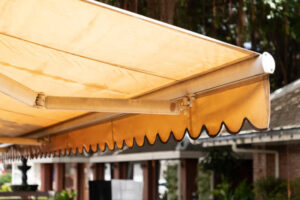Cast iron is a versatile material with a long history of industrial use. It is a group of iron-carbon alloys, containing more than 2% carbon content, which distinguishes it from other forms of iron. The presence of carbon in cast iron imparts unique properties, making it suitable for various applications across different industries. In this comprehensive discussion, we will explore the different types of cast iron, their distinctive characteristics, and the wide array of applications in which they are utilized.
1. Gray Cast Iron
Characteristics: Gray cast iron is the most common type of cast iron, known for its gray color when fractured. It contains graphite in the form of flakes distributed throughout the iron matrix, which gives it its distinctive appearance. The flakes of graphite hinder the formation of continuous grain boundaries, providing excellent machinability and vibration dampening properties.
Applications: Gray cast iron is widely used in automotive components like engine blocks, cylinder heads, and brake discs due to its excellent thermal conductivity, wear resistance, and ease of casting. It is also prevalent in construction and heavy machinery industries for making gears, pipes, and machine bases.
2. White Cast Iron
Characteristics: White cast iron contains cementite (iron carbide) instead of graphite. It has a white, shiny appearance and is considerably harder and more brittle than gray cast iron. The absence of graphite results in a uniform, hard surface.
Applications: White cast iron is used where high wear resistance is required, such as in crushing machinery, ball mills, and excavator teeth. Its hardness makes it suitable for cutting tools, although it is less ductile than gray cast iron.
3. Malleable Cast Iron
Characteristics: Malleable cast iron is produced by heat-treating white cast iron or ferritic matrix cast iron, which involves annealing the iron for an extended period. This process decomposes the cementite into irregularly shaped particles of graphite, giving the iron enhanced ductility and toughness.
Applications: Malleable cast iron is commonly used in the manufacture of small and intricate components, where both strength and ductility are required. It finds applications in door hardware, pipe fittings, agricultural equipment, and hand tools.
4. Ductile Cast Iron (Nodular Cast Iron)
Characteristics: Ductile cast iron contains spheroidal graphite nodules instead of flakes, imparting superior ductility and toughness compared to gray cast iron. The nodules form due to the addition of small amounts of magnesium or cerium during the casting process.
Applications: Ductile cast iron is extensively used in the automotive industry for producing crankshafts, suspension components, and other critical parts due to its high strength, ductility, and impact resistance. It is also employed in water pipes, pump housings, and gearboxes.
5. Compacted Graphite Iron (CGI)
Characteristics: Compacted graphite iron lies between gray cast iron and ductile cast iron in terms of graphite morphology. It contains interconnected and elongated graphite structures, which provide good thermal conductivity and higher tensile strength than gray cast iron but less than ductile cast iron.
Applications: CGI is employed in diesel engine cylinder heads and exhaust manifolds, where its combination of thermal performance and mechanical properties is advantageous.
Conclusion
Cast iron is a remarkably versatile material with a wide range of applications due to the various types of cast iron and their unique properties. From the common gray cast iron used in automotive and construction industries to the specialized white cast iron for wear-resistant applications, and the ductile cast iron for critical components, each type serves specific needs. Understanding the characteristics and applications of different cast iron types allows engineers and designers to choose the most suitable material for various applications, ensuring optimal performance and durability.





